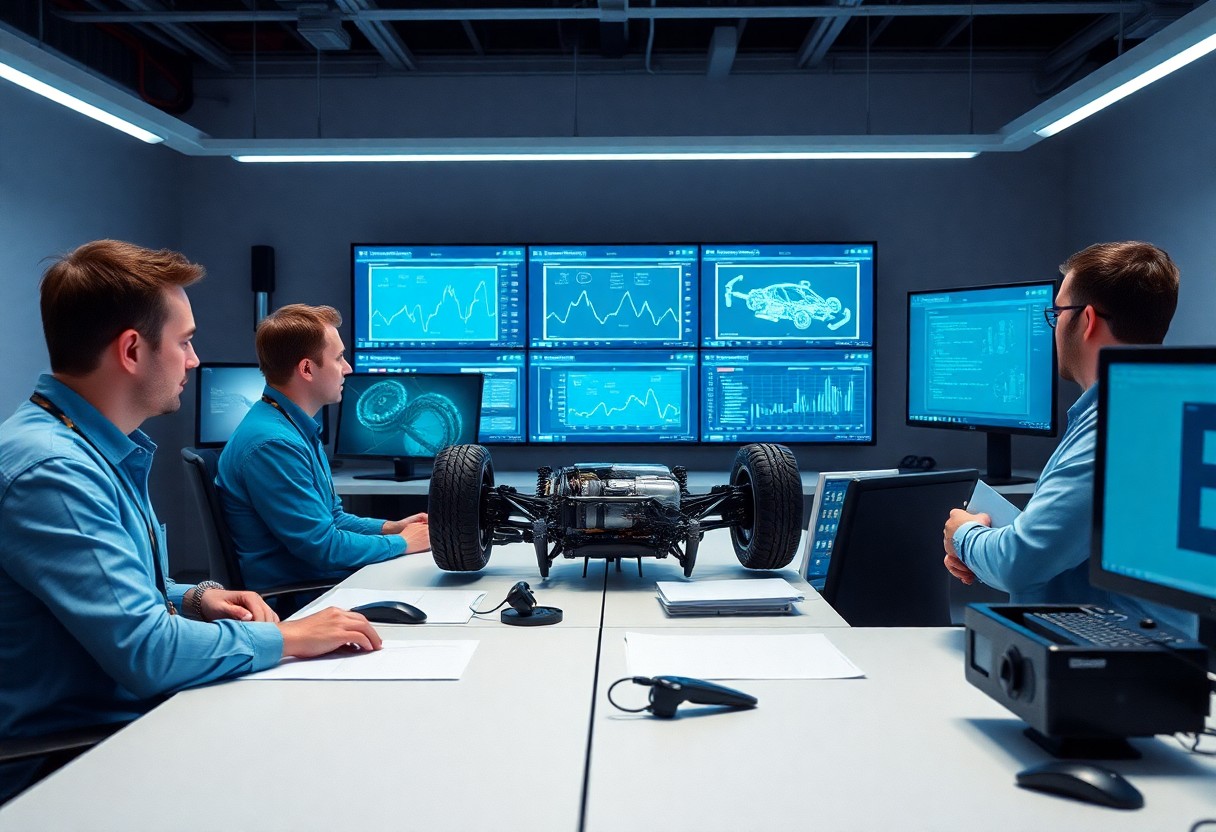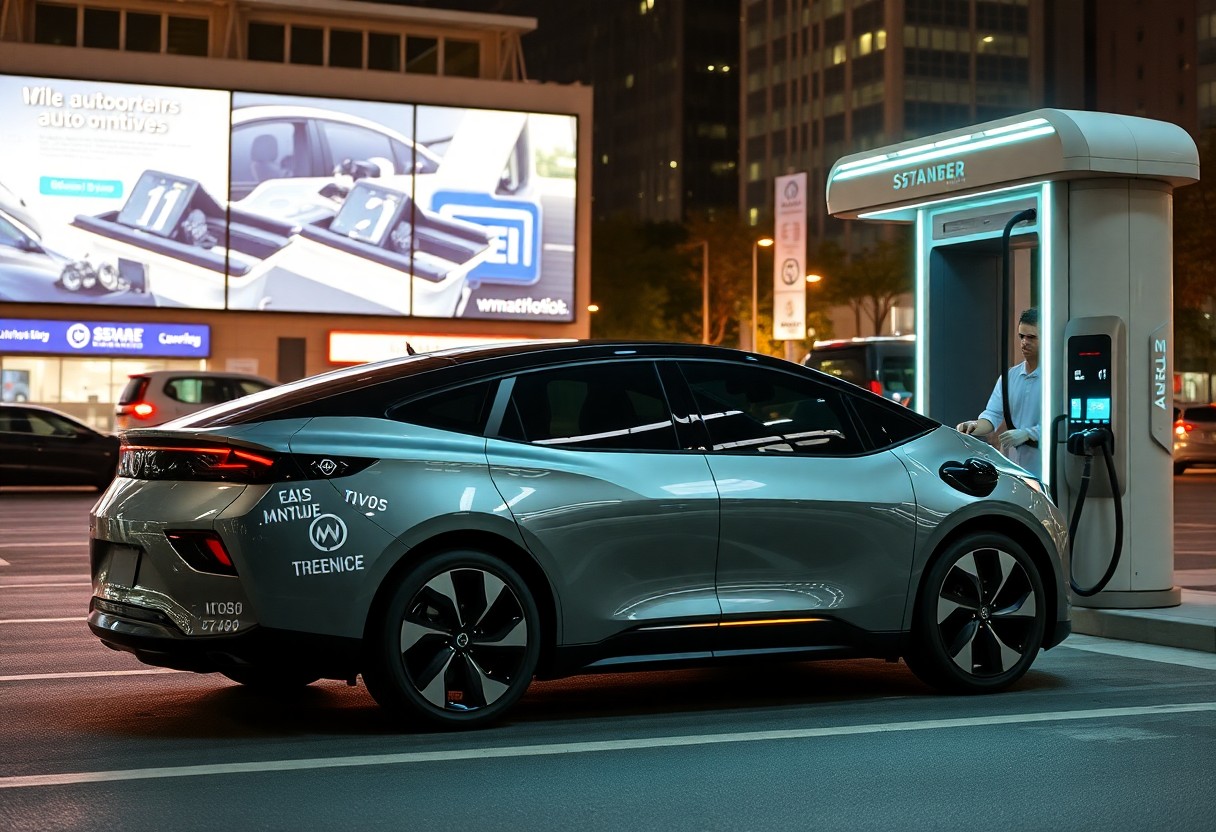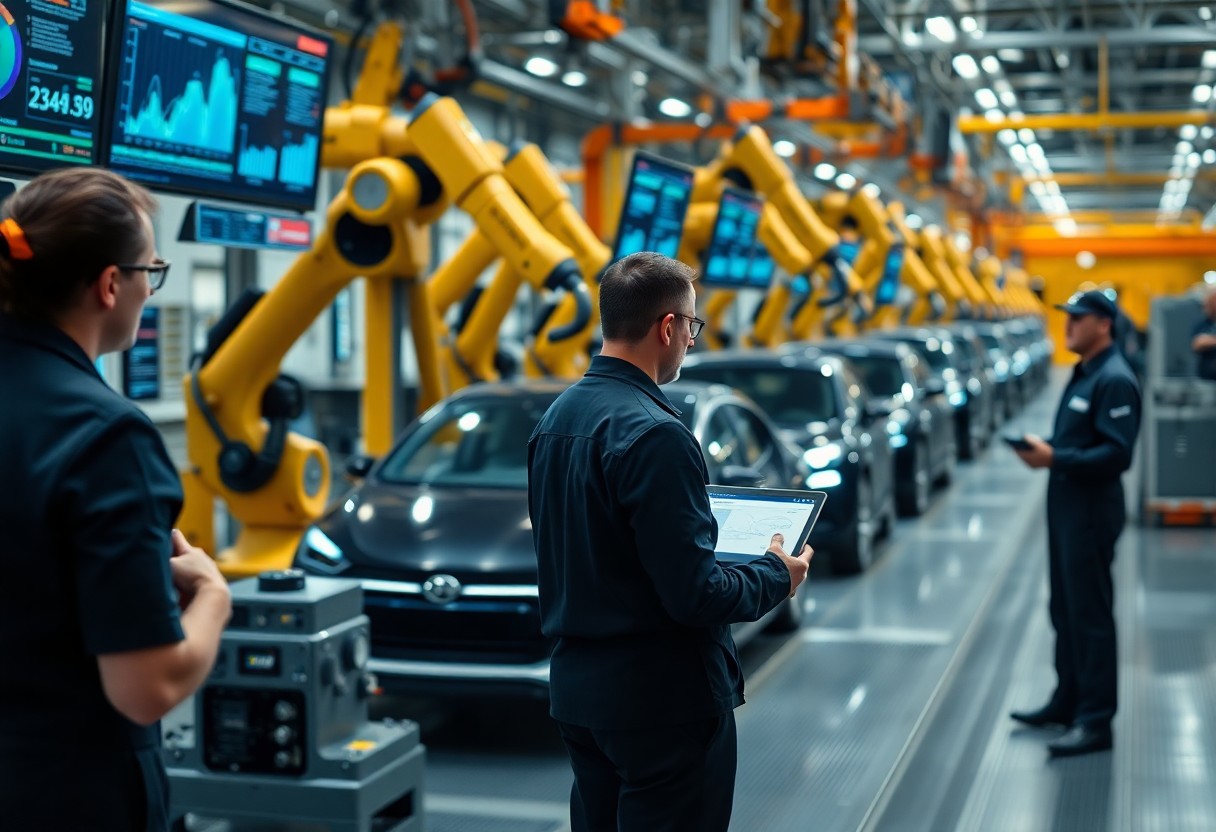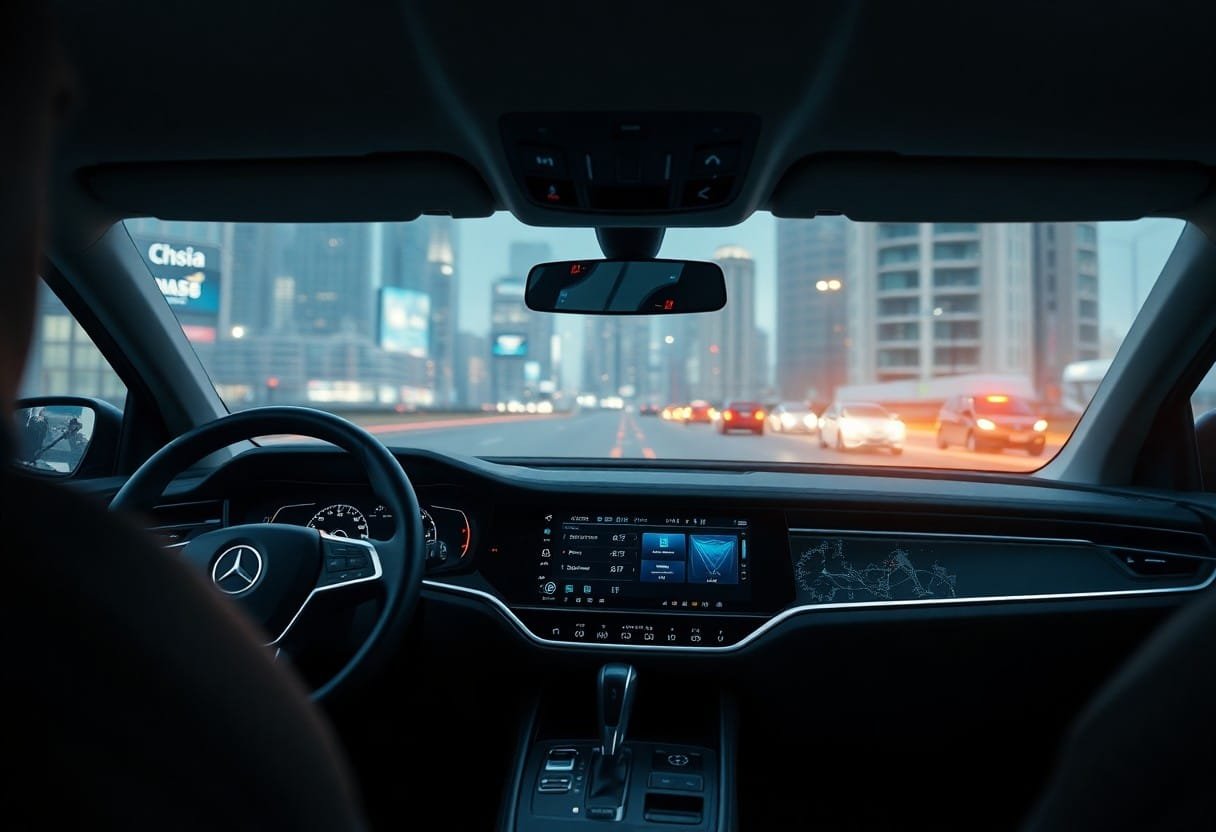Revolution is underway in the automotive industry, where software monetization and innovative transformations are reshaping how you interact with vehicles. As the shift towards Software-Defined Vehicles (SDVs) accelerates, it’s necessary to understand how these changes impact your driving experience and the future of transportation. Join us as we explore the exciting developments driving this revolution and how they can enhance your life behind the wheel.

Key Takeaways:
- The automotive industry is increasingly integrating software innovations to enhance vehicle functionality and user experience.
- Software monetization strategies, such as subscriptions and upgrades, are becoming important for revenue growth in the shifting market landscape.
- The shift towards Software-Defined Vehicles (SDVs) allows for greater flexibility, enabling manufacturers to respond rapidly to consumer demands and technological advancements.

The Automotive Landscape: A Shift in Gear
The automotive landscape is rapidly evolving, driven by a blend of technological advancements and shifting consumer expectations. Traditional methods of vehicle design and manufacturing no longer suffice as market players embrace new paradigms. Electric vehicles, advanced driver-assistance systems, and the demand for smarter, more efficient cars signify a major transformation in the industry, pushing companies to innovate or risk obsolescence.
The Rise of Software-Defined Vehicles
Software-defined vehicles (SDVs) are revolutionizing the automotive sector by prioritizing software and connectivity. These vehicles leverage over-the-air updates, allowing manufacturers to enhance performance and introduce new features post-purchase. As a result, consumers benefit from an ever-evolving driving experience, aligning with their increasing expectations for personalization and technology integration.
Embracing Connectivity and Innovation
Automakers are increasingly adopting connectivity solutions that enhance user experiences and streamline operations. This shift allows seamless integration of applications, real-time data analytics, and cloud capabilities into vehicles. For instance, companies like Tesla have set the standard for continuous software improvements, while others are following suit, realizing that connected vehicles lead to customer loyalty and new revenue streams.
This embrace of connectivity and innovation transforms how you interact with your vehicle, providing features such as navigation updates, predictive maintenance alerts, and even entertainment options tailored to your preferences. Major players are investing in partnerships with tech giants to create ecosystems that enhance vehicle functionality. Data generated by connected vehicles informs design decisions and customer service initiatives, ensuring that your vehicle remains relevant and adaptive in an increasingly digital world. This transformation not only boosts your driving experience but also positions automotive companies to thrive in a competitive landscape.
Software Monetization: The New Gold Rush
The automotive landscape is changing dramatically, and software monetization has emerged as a primary avenue for automakers to generate new revenue streams. As vehicles evolve into sophisticated mobile devices, manufacturers must embrace innovative software services to enhance profitability. For deeper insights, check out Fuel for Thought: Connected cars and the automotive ….
Understanding Value in Software Services
Understanding the value in software services is about recognizing the potential of connected features to meet customer needs. Services such as over-the-air updates, in-car app ecosystems, and subscription models can substantially increase user engagement while providing ongoing revenue. When you leverage data analytics, you can further tailor these services to enhance user experience and drive satisfaction.
Strategies for Successful Monetization
Successful monetization involves implementing diverse strategies that cater to evolving consumer preferences. Subscription-based models, pay-per-use services, and tiered offerings allow you to create multiple touchpoints of recurring revenue. Additionally, partnerships with tech firms can unlock advanced features, enhancing your product lineup while attracting a broader audience.
Developing a well-rounded approach to monetization requires you to analyze market trends and customer behavior continuously. A mix of subscription services for premium features, personalized offerings, and bundled services can create compelling packages that resonate with consumers. Incorporating customer feedback into your service development will ensure your offerings remain relevant, driving loyalty and maximizing profit potential in this new automotive era.
Challenges on the Road to Transformation
Transitioning to a software-defined vehicle (SDV) ecosystem presents numerous challenges that automakers must navigate. With rapid technological advancements, companies face pressures to innovate while also addressing existing legacy systems. Furthermore, the competition is fierce as new entrants disrupt traditional models, compelling established players to rethink their strategies and investments in technology and talent.
Navigating Regulatory and Technical Hurdles
Regulatory compliance and technical integration remain significant obstacles in the SDV landscape. Manufacturers must adhere to stringent safety regulations while simultaneously adapting to evolving standards related to software and connectivity. As new technologies emerge, staying ahead of the regulatory curve becomes important to avoid costly delays and legal setbacks.
Addressing Consumer Concerns and Expectations
Consumer perceptions and expectations present another layer of complexity in the SDV transformation. Many individuals are wary of embracing advanced technologies, raising concerns about data privacy, cybersecurity, and the overall user experience. Ensuring transparency and communication around these issues plays a vital role in gaining consumer trust and fostering acceptance of SDVs.
Addressing consumer concerns involves proactive engagement and education. Providing clear information about data usage and security measures can alleviate fears surrounding privacy. Automakers leveraging real-world case studies showcasing the benefits of SDVs, such as enhanced convenience and personalized experiences, can help in reshaping consumer perceptions. Moreover, feedback loops where consumers share their experiences can guide developments, ensuring that the end product genuinely meets their needs and expectations. This approach builds a more informed customer base, willing to embrace the future of driving.

Case Studies: Leaders in the SDV Revolution
Innovative automotive companies are at the forefront of the SDV revolution, leveraging software to enhance vehicle functionality and customer experience. Your understanding of these pioneers and their successes can provide valuable insights into effective strategies and practices within this transformative landscape.
- Tesla: Over 1 million vehicles with over-the-air updates, generating $1.9 billion in service revenue in 2022.
- Volkswagen: Plans to invest €73 billion by 2025 in software development, targeting 10 million connected vehicles.
- General Motors: Aiming for $20 billion in software revenue by 2030 with the launch of Ultra Cruise and subscriptions.
- Ford: Projected $50 billion in new software-related revenue by 2026 with Ford Pro and FordPass upgrades.
- BMW: Introduced a subscription model for heated seat features, generating significant customer engagement and additional revenue streams.
Innovators Leading the Charge
Top companies are redefining the automotive landscape by integrating advanced software features, focusing on connectivity, autonomous capabilities, and personalized experiences. You can observe how their dedication to innovation shapes customer loyalty and enhances vehicle performance.
Lessons Learned from Industry Trailblazers
Analysis of industry leaders reveals valuable strategies for navigating the SDV landscape, including the importance of customer-centric development and agile methodologies. Your takeaway will be how an adaptive approach can lead to meaningful product offerings and increased market share.
Successful companies emphasize the need for continuous improvement and feedback loops from consumers. By prioritizing user experience, automotive brands can ensure relevance in a competitive market. Embracing partnerships with tech firms also fosters innovation, enabling faster deployment of software features that resonate with users. These lessons not only pave the way for sustainable growth but also underline the transformative potential of combining automotive engineering with cutting-edge software solutions.
The Future of Mobility: What Lies Ahead
The next wave of automotive innovation is set to redefine your driving experience, focusing on software-defined vehicles (SDVs) that emphasize connectivity, automation, and sustainability. As technology evolves, everything you need to know about the Software Defined Vehicle underscores the importance of embracing this shift to unlock new levels of efficiency and user engagement.
Predictions for the Next Decade
In the coming decade, expect significant advancements in SDVs driven by artificial intelligence and machine learning, enhancing safety and personalization in your vehicle. Analysts forecast that by 2030, the SDV market could surpass $500 billion, with features such as full autonomy and predictive maintenance becoming standard.
The Role of Collaboration in Shaping Tomorrow
Your involvement in the automotive ecosystem will be vital as manufacturers, tech companies, and regulatory bodies unite to create a seamless transition to SDVs. This collaboration fosters innovation, allowing shared knowledge and resources to address challenges like cybersecurity and infrastructure readiness.
Collaborative efforts are already reshaping the future, as companies like Ford and Google partner on data-driven vehicle services to enhance driver experiences. Joint initiatives facilitate the integration of advanced technologies such as cloud computing and AI, ensuring safety and efficiency in SDVs. Involving diverse stakeholders, including startups and academic institutions, can accelerate the discovery of solutions that address complex mobility issues, paving the way for a safer, more connected automotive landscape that benefits you directly.
Conclusion
As a reminder, your role in the automotive industry’s transformation through software monetization is pivotal to embracing the SDV revolution. By understanding how technology reshapes the driving experience and unlocking new revenue streams, you can stay ahead in this rapidly evolving market. Adapting to these changes not only enhances your business opportunities but also enriches your engagement with customers. Embrace these innovations, and you’ll be well-equipped to navigate the future of mobility.


